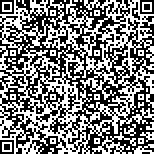| 引用本文: | 赵文文,张萌,张艳菊,杨燕,庞丽丽,田永章,王景雁,张欢,梅冬,王晓玲.青紫颗粒单次及重复给药毒性试验研究[J].中国现代应用药学,2023,40(13):1833-1839. |
| ZHAO Wenwen,ZHANG Meng,ZHANG Yanju,YANG Yan,PANG Lili,TIAN Yongzhang,WANG Jingyan,ZHANG Huan,MEI Dong,WANG Xiaoling.Study on the Single and Repeated Dose Toxicity of Qingzi Granules[J].Chin J Mod Appl Pharm(中国现代应用药学),2023,40(13):1833-1839. |
|
| |
|
|
| 本文已被:浏览 745次 下载 453次 |

码上扫一扫! |
|
|
| 青紫颗粒单次及重复给药毒性试验研究 |
|
赵文文1, 张萌1, 张艳菊1, 杨燕2, 庞丽丽3, 田永章3, 王景雁1, 张欢1, 梅冬1, 王晓玲1
|
|
1.国家儿童医学中心, 首都医科大学附属北京儿童医院, 药学部, 北京 100045;2.国家儿童医学中心, 首都医科大学附属北京儿童医院, 中医科, 北京 100045;3.国家北京药物安全评价研究中心, 北京 100850
|
|
| 摘要: |
| 目的 观察青紫颗粒单次给药以及重复给药13周对大鼠产生的毒性反应,评价临床前安全性。方法 单次给药毒性试验:SD大鼠随机分为溶媒对照组(去离子水),青紫颗粒组(18 g·kg-1),给药体积为每次30 mL·kg-1,24 h内灌胃给药2次(间隔至少4 h),给药后观察14 d,通过临床观察体质量变化和病理解剖等确定毒性反应。重复给药毒性试验:幼龄SD大鼠(4日龄)随机分为溶媒对照组(去离子水),低、中、高剂量青紫颗粒组(1,2,4 g·kg-1),给药13周,给药体积每次10 mL·kg-1,每天给药2次,恢复期4周。检查项目包括临床观察、体质量、摄食量、血液学、生物化学、免疫学和尿液分析检测、激素水平、幼鼠发育指标、组织病理学检查等。结果 单次给药毒性试验:青紫颗粒灌胃给予SD大鼠,无明显毒性,最大耐受量>18 g·kg-1。重复给药毒性试验:幼龄SD大鼠灌胃给予青紫颗粒重复给药13周,最大无毒性反应剂量为2 g·kg-1。潜在毒性靶器官为肝脏,主要毒性作用表现为肝细胞炎性坏死,没有剂量依赖关系。结论 青紫颗粒对受试动物在拟临床使用剂量范围内未见有明显的毒性作用。 |
| 关键词: 青紫颗粒 医院制剂 单次给药毒性 重复给药毒性 幼龄动物 |
| DOI:10.13748/j.cnki.issn1007-7693.20221551 |
| 分类号:R285.5 |
| 基金项目:“重大新药创制”国家科技重大专项项目(2018ZX09721003);北京市自然科学基金-海淀原始创新联合基金资助(L212013);首都医科大学附属北京儿童医院儿童用药专项(MYZD202203) |
|
| Study on the Single and Repeated Dose Toxicity of Qingzi Granules |
|
ZHAO Wenwen1, ZHANG Meng1, ZHANG Yanju1, YANG Yan2, PANG Lili3, TIAN Yongzhang3, WANG Jingyan1, ZHANG Huan1, MEI Dong1, WANG Xiaoling1
|
|
1.National Center for Children's Health, Beijing Children's Hospital, Capital Medical University, Department of Pharmacy, Beijing 100045, China;2.National Center for Children's Health, Beijing Children's Hospital, Department of Traditional Chinese Medicine, Beijing 100045, China;3.Beijing National Center for Drug Safety Evaluation and Research, Beijing 100850, China
|
| Abstract: |
| OBJECTIVE To observe the toxic effects of single administration and repeated administration of Qingzi granules for 13 weeks on rats, and to evaluate their preclinical safety. METHODS For the single dose toxicity experiment, SD rats were randomly divided into two groups, vehicle control group(deionized water) and Qingzi group(18 g·kg-1), which were given in a volume of 30 mL·kg-1 per time, twice in 24 h(interval more than 4 h), and observation was performed for 14 d after administration. The toxicity reaction was evaluated through observation of body weight change and pathological anatomy. For the repeated dose toxicity experiment, juvenile SD rats(postnatal day, PND 4) were randomly divided into vehicle control group (deionized water) and low, medium and high dose of Qingzi groups(1, 2 and 4 g·kg-1). The rats were orally administered twice daily with vehicle or Qingzi for 13 weeks in a volume of 10 mL·kg-1 per time. A recovery period of 4 weeks was followed. Test items included clinical observations, body weight measurement, food intake measurement, hematology test, biochemical test, urinalysis, sex hormone level determination, cellular immune function assay, growth indexes and histopathology test. RESULTS For the single dose toxicity experiment, Qingzi granules were orally administered to SD rats without significant toxicity, and the maximum-tolerated dose was greater than 18 g·kg-1. In the repeated dose toxicity test, juvenile SD rats were given Qingzi granules by gavage and repeated administration for 13 weeks, the no observed adverse effect level was 2 g·kg-1. The target organ of toxicity was the liver and the main toxic effect was inflammatory necrosis of hepatocytes, no dose-dependent relationship. CONCLUSION No overt toxicity of Qingzi granules was observed on the tested animals within the intended clinical dosage range. |
| Key words: Qingzi granules hospital preparation single dose toxicity repeated dose toxicity juvenile animal |
|
|
|
|
